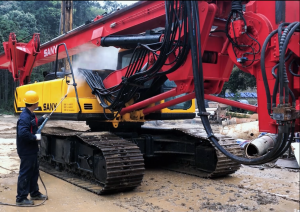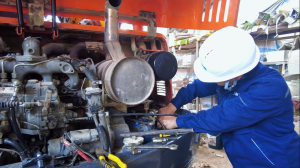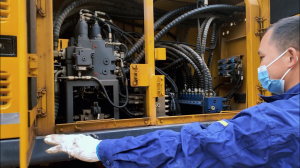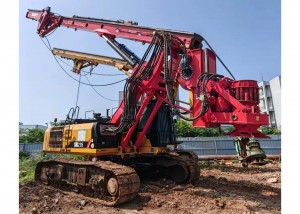When it comes to used construction machinery, such as rotary drilling rigs, regular inspection and maintenance play a crucial role in extending their lifespan and ensuring optimal performance. By taking proactive measures, you can prevent breakdowns, minimize downtime, and maximize the return on your investment. In this comprehensive guide, we will provide you with valuable insights, expert tips, and essential information to help you effectively inspect and maintain your used rotary drilling rig.

Importance of Inspection
Regular inspections are vital for identifying potential issues and addressing them before they escalate into major problems.
Visual Inspection
Conduct a visual inspection of the entire drilling rig, paying attention to components such as the mast, rotary head, drill pipe, hydraulic system, and electrical connections. Look for signs of wear, corrosion, leaks, or any other visible abnormalities.
Functionality Check
Test the rig’s various functions and controls to ensure they are operating smoothly. This includes checking the rotation speed, feed system, hydraulic pressure, and overall functionality of the rig.
Safety Inspection
Prioritize safety by inspecting safety devices, such as emergency stop buttons, interlocks, and warning signs. Ensure that all safety features are in proper working condition.

Maintenance Best Practices
Routine maintenance is essential for keeping your rotary drilling rig in top condition.
Lubrication
Proper lubrication of moving parts is crucial to reduce friction and wear. Follow the manufacturer’s guidelines to determine the recommended lubrication schedule and use high-quality lubricants suitable for the specific components.
Filter Replacement
Regularly replace filters for the hydraulic system, engine, and air intake to maintain optimal performance and prevent contamination.
Fluid Analysis
Periodically analyze the condition of hydraulic fluids and lubricants to detect any signs of contamination, degradation, or excessive wear. Timely fluid replacements and adjustments can prevent damage to critical components.
Component Inspection
Pay close attention to critical components such as the drilling bit, drill pipe, hydraulic hoses, and electrical wiring. Inspect for signs of wear, damage, or misalignment and replace or repair as necessary.

Training and Documentation
Invest in training programs for your equipment operators and maintenance personnel.
Operator Training
Ensure that your operators receive proper training on the equipment’s operation, maintenance requirements, and safety protocols.
Documentation
Maintain detailed documentation of inspections, maintenance activities, and repairs. This documentation will help you track the rig’s history, identify recurring issues, and plan future maintenance schedules effectively.

Conclusion
By prioritizing regular inspection and maintenance for your used rotary drilling rig, you can significantly extend its lifespan, minimize downtime, and optimize its performance. Implementing the tips and practices outlined in this guide will help you prevent breakdowns, improve safety, and ensure that your equipment operates at its best. Remember, a well-maintained drilling rig is an asset that contributes to the success of your construction projects.
Post time: Jun-27-2023





